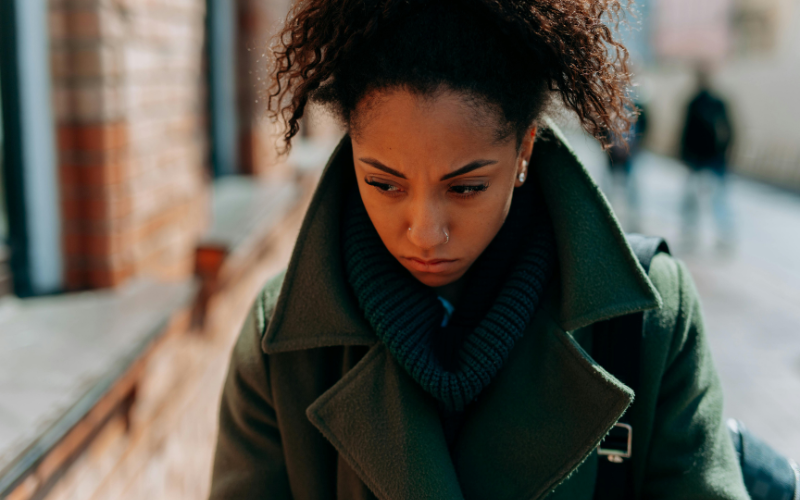
There are many types of inappropriate sexual behaviours that can occur in schools and classrooms. These types of behaviours can make your school a hostile environment where students feel unsafe. It is important to challenge and address these behaviours in order to create a safe environment for everyone.
Inappropriate Sexual Behaviour in UK Schools
Unfortunately, sexual harassment is prevalent in UK schools with two thirds of girl’s experiencing sexual harassment at school.
Similarily, after the hundreds of submissions to Everyone’s Invited about sexual harassament and assault in schools, the UK government requested Ofsted to conduct a rapid review of sexual abuse in schools and colleges in England.
The review found that the vast majority of girls indicated that harmful sexual behaviours happened ‘sometimes’ or ‘a lot’ between people their age. Some of the commonly reported behaviours included:
- Sexist name-calling
- Sexist comments
- Being sent sexual images
- Being coerced into sharing sexual images.
The report also found that boys were much less likely to think that harmful sexual behaviour affected them or their peers.
Boys’ Attitudes to Sexual Harassment
In our blog, Teaching Consent Education in Schools, we explored boys’ attitudes to consent through research Life Lessons conducted with Surrey University.
Through this research it was revealed that in regards to sexual violence, sexual harassment and assault, boys believe that “other” boys are perpetrators of sexual assault and these boys are purposely violent and enjoy violence against women.
This is important to show how certain inappropriate sexual behaviours have been normalised by society and boys don’t realize the harm that these behaviours have.
Types of Inappropriate Sexual Behaviour
There are different types of inappropriate sexual behaviours, some very obvious and other more subtle.
Inappropriate Physical Behaviour
- Unwanted Touching: Touching someone without their consent including kissing, grabbing, groping and touching someone over their clothing.
- Forced Kissing: Forcing someone to kiss without their consent or continuing to kiss them when they have expressed discomfort.
- Sexual Assault: Any non-consensual sexual activity, including penetration, touching, or forcing someone to engage in sexual acts.
- Exposing Oneself: Exposing intimate body parts to others without their consent.
- Invasion of Personal Space: Invading someone’s personal space for sexual gratification such as standing too close to them, blocking their path, or rubbing against them.
Inappropriate use of Technology
- Non-Consensual Recording: Secretly recording or distributing images or videos of someone engaged in sexual activity without their consent. This is also known as image-based sexual abuse.
- Sexploitation: Obtaining explicit images or videos of a person and threatening to share them unless they pay. Read more about this in our blog What is Sexploitation? Signs, Resources and Support for your Students.
- Online Harassment: Engaging in sexually explicit or threatening behaviour towards others online, including stalking, trolling, or sending unwanted sexual messages.
- Sending Explicit Material: Sending pornography, sexual images or videos to someone online without their consent.
- Catfishing: Deceiving people online by pretending to be someone else often to obtain sexual images or information from that person.
Inappropriate Language
- Sexual Jokes or Innuendos: Making jokes or comments with sexual undertones can make others uncomfortable.
- Catcalling or Whistling: Making suggestive noises or remarks towards someone’s appearance to objectify and disrespect them. This can also include making inappropriate comments about someone’s physical appearance.
- Sexual Slurs or Insults: Using derogatory terms related to gender or sexuality can be hurtful and discriminatory. Such language promotes prejudice and can lead to bullying or harassment.
- Objectifying Language: Referring to someone in a sexually objectifying manner reduces them to their physical appearance or body parts, disregarding their humanity and dignity. Such language perpetuates harmful attitudes towards gender and sexuality.
- Sexual Coercion: Pressuring or manipulating someone into engaging in sexual activity against their will through threats, blackmail, or other forms of coercion.
Please note: This is not an exclusive list, there can be other forms of inappropriate sexual behaviours not listed.
How to Challenge this Behaviour
Here are some of the ways you can challenge these behaviours to make school a safe space for everyone. It is also important to acknowledge that harmful and inappropriate sexual behaviour can be perpetrated by anyone and can happen to anyone. Therefore we must ensure discussion about this topic is facilitated for all students, and all students know where they can go to for support around this issue. There may be more specific organisations that would be useful to signpost to for some students e.g. members of the LGBTQ+ community. Although evidence shows that this behaviour is predominantly perpetrated by boys towards girls, it’s important to acknowledge that this isn’t always the case and anyone can be guilty of this behaviour or be a victim.
Acknowledge that it Happens
Sexual assault, harassment and inappropriate sexual behaviour happens everywhere in our society, so it’s important that we acknowledge that it happens in all settings to some degree. Open communication around why this behaviour is occurring and why it is not appropriate will help to challenge any behaviour occurring in your school.
Foster Healthy Relationships and Respect in RSHE Lessons
RSHE lessons are a powerful tool to foster healthy relationships and respect for one another. Ensure your school has a strong RSHE/PSHE spiral curriculum which includes themes relating to consent, sexual harassment, healthy relationships and gender stereotypes.
Normalise Discussions around this Topic
Normlising discussion around sexual behaviour is a great way to address concerning behaviour occurring within your school. If students feel comfortable discussing the behaviours it will help to convey how someone behaviours which may seem fine, are actually inappropriate and harmful.
Challenge Misogyny
Challenge this behaviour when you see it occurring. Do not let it slide but address it and show it does not have a place within your school. This will then encourage your students to also challenge their peers’ behaviour and create a whole-school approach to dealing with inappropriate sexual behaviours.
Encourage Reporting
Creating safe spaces where students feel comfortable to report this behaviour is vital to preventing it from occurring. It’s Just Everywhere, a study on sexism in school, found that only 14% of girls who experienced sexual harassment at school reported it. Consider why they are not reporting and how you can change your processes to ensure more people feel safe reporting this behaviour.
Life Lessons Videos
Here are some Life Lessons videos around this topic.
We hope these tips help you to foster a safe environment in your school where inappropriate sexual behaviour is challenged and students feel empowered to speak up against harmful behaviour.
References
Girlguiding-research-briefing_girls-experiences-of-sexual-harassment_june2021.pdf
review-of-sexual-abuse-in-schools-and-colleges.pdf (nspcc.org.uk)
Everyone’s Invited (everyonesinvited.uk)
It’s just everywhere | National Education Union (neu.org.uk)



